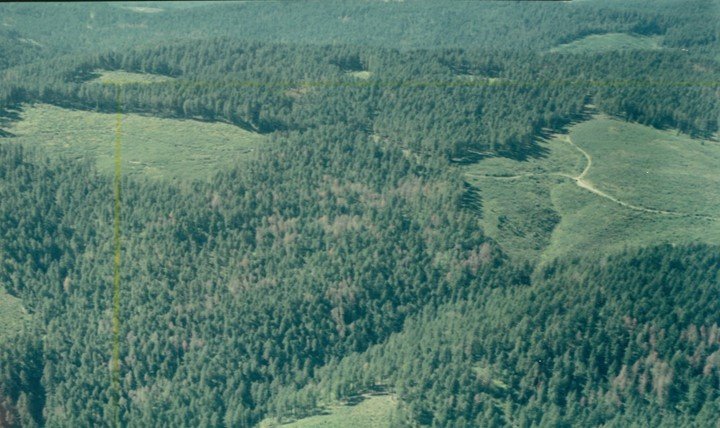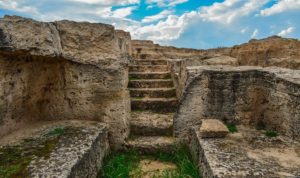Remote sensing is used in many states by natural resource management of the forestry sector. Both private and state forestry agencies use remote sensing majorly for assessment, supporting analysis, and management of the forests.
Remote sensing data is an essential element of forest inventories. The forest sector is second to the military in using remote sensing data for inventory purposes. Remote sensing is the use of all space-borne and airborne instruments for observation of the Earth. Some of these instruments include optoelectronic systems and synthetic aperture radar (SAR). Positioning or navigation systems along with terrestrial remote sensing systems are essential for sample-based field measurement and sampling.
The problem of Forest management
Before understanding the problem related to forest management, let us first understand what exactly forest management is. Forest management is maintaining a balance between the ecological functions of the forest ecosystem and the demands of an over increasing human population. Sustainable forest management involves a broad range of factors such as forest health, biodiversity, and resilience against fire and disease.
Increasing demand for forest resources goes hand in hand with increased protection of the forest, including harvest and other problems, especially those that cause permanent land damage. Value chain optimization is the key parameter due to competing demands and increased competition among fiber suppliers. The problem with forest management in complex with novel challenges related to inventory programs. Moreover, forest information should be spatially detailed, accurate, up to date, and must describe forest structure, composition, and wood supply attributes. New information sources are required as the aforementioned needs exceed the design and scope of current forest inventories.
The need for forest management
Inventory of forest serves multiple purposes. For instance, forest inventory is important for tactical, operational, and strategic planning. National forest inventories have information about forest resources nationwide and thus are capable of national-level policy development and strategic planning.
Information required for forest management involves biomass carbon balance, growing stock volume, forest cover, and large-scale wood procurement potential. National forest inventories (NFI), in many countries, are based on field samples. Forest attribute maps can be prepared but its accuracy is inadequate and thus cannot be used for tactical forest management planning. The forest management proposals provide detailed maps that aids in detailing wood procurement potential. This information is usually gathered using remote sensing methodologies. Furthermore, site types are classified to map forest thinning regime, growth potential, and biodiversity. The wood procurement chain, which lands from forest to user starts with accurate knowledge of available harvest. Thus, mapping the potential harvesting site is one of the most important roles of forest managers.
Remote sensing technologies and their use in forest management
1. Airborne laser scanning
This is a remote sensing technology that can measure the 3-dimensional distribution of vegetation in the forest canopies. Airborne laser scanning is thus an important tool required to describe vertical forest structure. They are categorized according to the mode by which they record the energy that returns to the sensor. For a single laser pulse that is emitted, various return systems record multiple or single returns. These measured laser returns when combined with precise location, which is provided by the Global Navigation Satellite Systems (GNSS) aids in generating 3-dimensional point clouds that represent the spatial distribution of canopy elements. Data produce by ALS can be acquired between 500 m – 3000 m. In addition to the estimation of forest inventory, ALS also aids in producing bare-earth digital terrain models.
2. Digital Aerial Photogrammetry
Digital aerial photogrammetry, known as DAP, is an upcoming source of information for 3-dimensional information, which is similar to that of ALS. Nowadays, novel digital airborne cameras have evolved that allow a greater acquisition overlap between images. The best part is that these cameras don’t incur additional costs for producing this overlap of images. These cameras along with advancements in computing hardware and state-of-the-art multi-image matching algorithms allow the production of image-based point clouds.
3. High-Spatial- and Very-High-Spatial-Resolution Optical Satellite Imagery
With the development of a high-spatial-resolution satellite, a new era has started in the forest industry. Spatial resolution is described according to the ability to distinguish the object of interest. Meaning, are there many objects per pixel (where the individual characteristics are considered) or are there many pixels per object (allowing for identification).
Application of remote sensing technology in forest management
Remote sensing technology uses multispectral and panchromatic satellite image data processing operations that include haze removal, geofencing of the image, and image enhancing techniques, such as color balancing techniques and pansharpening of the image. It aids in mapping the land under forest cover, analyzing change detection, classification of Normalized Difference Vegetation Index and mapping of it, culture data extraction, Urbanization (monitoring of the urban growth), and classification of lithology.
Some of the applications of remote sensing in forest management are:
1. The multi-layered site representation is possible by using hydrology and elevation.
The locational information of infrastructure and roads and the interpreted data of large areas are useful for fire mapping and emergency. Moreover, forest fires affect plants, vegetation cover, animals, soil, air quality, streamflow, and climate. This loss of life and property also results in loss of timber. Forest fires also cause destruction of wildlife habitat. Geographical Information System (GIS) is essential for forest fire remodeling as it provides efficient and timely geospatial information of forest structure.
2. Monitoring of the human activities in the forests
Geographical Information System is also essential for forest management as the majority of the rainforest are depleting exponentially, which is a result of over increasing rate of agriculture and urbanization and these human activities encroach forest areas.
3. Deforestation monitoring

Different multispectral imageries along with GIS maps help in identifying deforestation due to urban growth. It also aids in identifying factors causing deforestation. Furthermore, temporal satellite images provide information on deforestation and analysis of forest cover.
4. Analysis
The geographical information system provides representation in the form of maps, graphs, and other GIS statistical modeling functionalities, which is an essential tool for forest management.
5. Lastly, Digital Elevation Data (DEM) of the forest is useful for GIS analysis.
It also aids in the examination of terrain attributes, movement of nutrients and soil from it, and its outcome on the forest, wildlife productivity, and plant distribution.
In conclusion, remote sensing is an essential tool for landscape and forest management. This technology involves the use of analysis, sensors, and processing software. It is seen that remote sensing provides a better understanding of studies sites. At general planning for forest resource allocation or in the strategic level of forest planning, remote sensing is the key factor that aids in monitoring and estimating forest cover. However, at the tactical stage, while planning forest management activities in a particular landscape, remote sensing might not be that useful.



